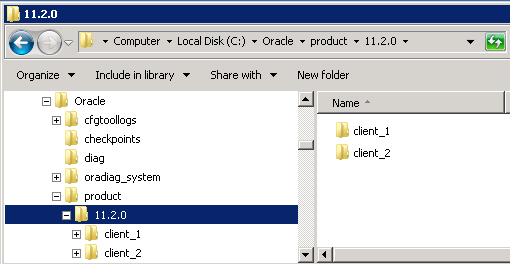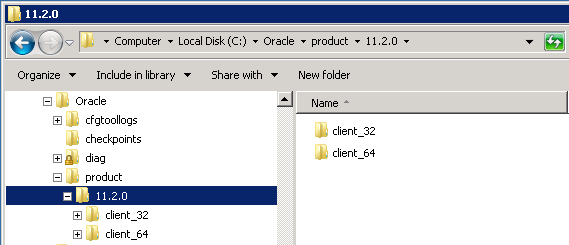One dose of Larry Ellison is enough for most people. Unless you need two. There are two common scenarios for SAP BusinessObjects BI4 customers that require installation of 32-bit and 64-bit client tools on the same server.
The first scenario occurs when the BI platform and its client tools are installed on the same server. The BI4 platform is (mostly) 64-bit (see related article, SAP BusinessObjects BI 4 is Mostly 64-bit), yet all of its client tools such as the Information Design Tool or Universe Design Tool are 32-bit. A second scenario occurs when the BI4 platform must support classic Crystal Reports (2011/20132016). The Crystal Reports processing server requires 32-bit middleware even though new Crystal Reports for Enterprise reports use 64-bit middleware (Microsoft SQL Server users should read my related article More Fun with 64-bit Windows and ODBC).
Distinguishing between the two Oracle installations can be challenging, particularly when default home folder names are used. The example below has two client tool installations using the default folder names, client_1 and client_2. But which one is 32-bit? Which one is 64-bit? These are questions that shouldn’t be asked during groggy 3:00 AM support calls.
To minimize the confusion, simply rename the default directories when installing the Oracle clients. The 64-bit middleware should be installed first. I specify a directory name of client_64. Then I install the 32-bit middleware, using a directory name of client_32. The final result is shown below. Notice that I also use C:\Oracle as the home directory, not the C:\app\[username] nonsense that Oracle sets for the default directory.
Now there isn’t any ambiguity, either in Windows Explorer or in the PATH environmental variable. The folder names are self-documenting. Be sure that each installation has an identical copy of a single, standard tnsname.ora file in their respective network/admin folders.
UPDATE (March 31, 2014): Oracle 11g is no longer supported on Windows Server 2012 R2 so I installed Oracle 12c clients for the first time. I typically use the Administrator installation option for both 64-bit and 32-bit clients, but the 32-bit client complained. I opted instead for the Runtime installation option for the 32-bit client, which installed without complaining. This type of install still provides 32-bit SQL*Plus, so that’s good enough for me.
I hope this simple naming trick makes your SAP BusinessObjects BI server easier to manage.






In BI4.0, do UNV’s that are migrated from 3.1 to 4.0 require the 32 bit driver for oracle or the 64 bit driver?
Most, but not all, legacy UNV will require 64-bit middleware. Some, like MS Access, are still 32-bit (notice the eFashion DSN’s are only in the 32-bit ODBC panel, not the 64-bit). Universes converted to the new UNX format will always be 64-bit.
perefect Dallas, great blog, I tried it and it worked
Thks
Hi, thanks for this post. Is there a particular reason why you start by installing 64 bits client and not the 32 bits?
Regards
Starting with Oracle Database 11g Release 2 (11.2.0.4), Oracle Database server, client, and Oracle RAC are supported on Windows Server 2012 (64-bit only) and Windows Server 2012 R2 (64-bit only).
UPDATE (March 31, 2014): Oracle 11g isn’t supported on Windows Server 2012 R2 so I installed Oracle 12c clients for the first time. I typically use the Administrator installation option for both 64-bit and 32-bit clients, but the 32-bit client complained. I opted instead for the Runtime installation option for the 32-bit client, which installed without complaining. This type of install still provides 32-bit SQL*Plus, so that’s good enough for me.
I am choosing the runtime version of the 32 bit client to install but when I hit the “Install” button, the installation crashes without giving me a reason.
Can you please help !
Sujatha,
Thanks for writing. Several blogs point to the 32-bit OracleRemExecService for Oracle 12c not being compatible with the 64-bit and describe steps to remove the 64-bit version before attempting the 32-bit client tool install. Good luck!
Regards,
Dallas
What settings do you need to follow in the Environment Variables?
By following these directions (64-bit first, then 32-bit), I’ve not needed to adjust environmental variables. I would defer to your landscape’s Oracle DBA if any adjustments were required.